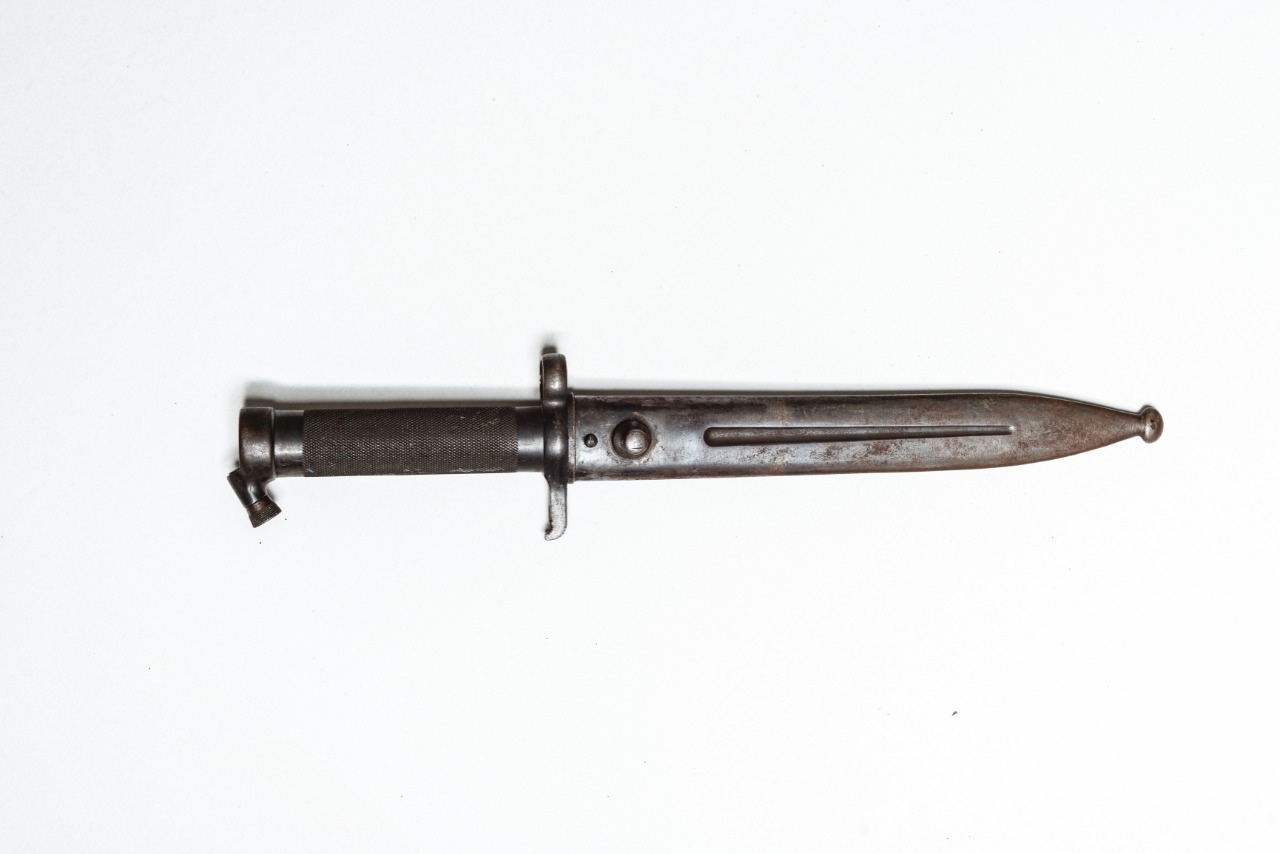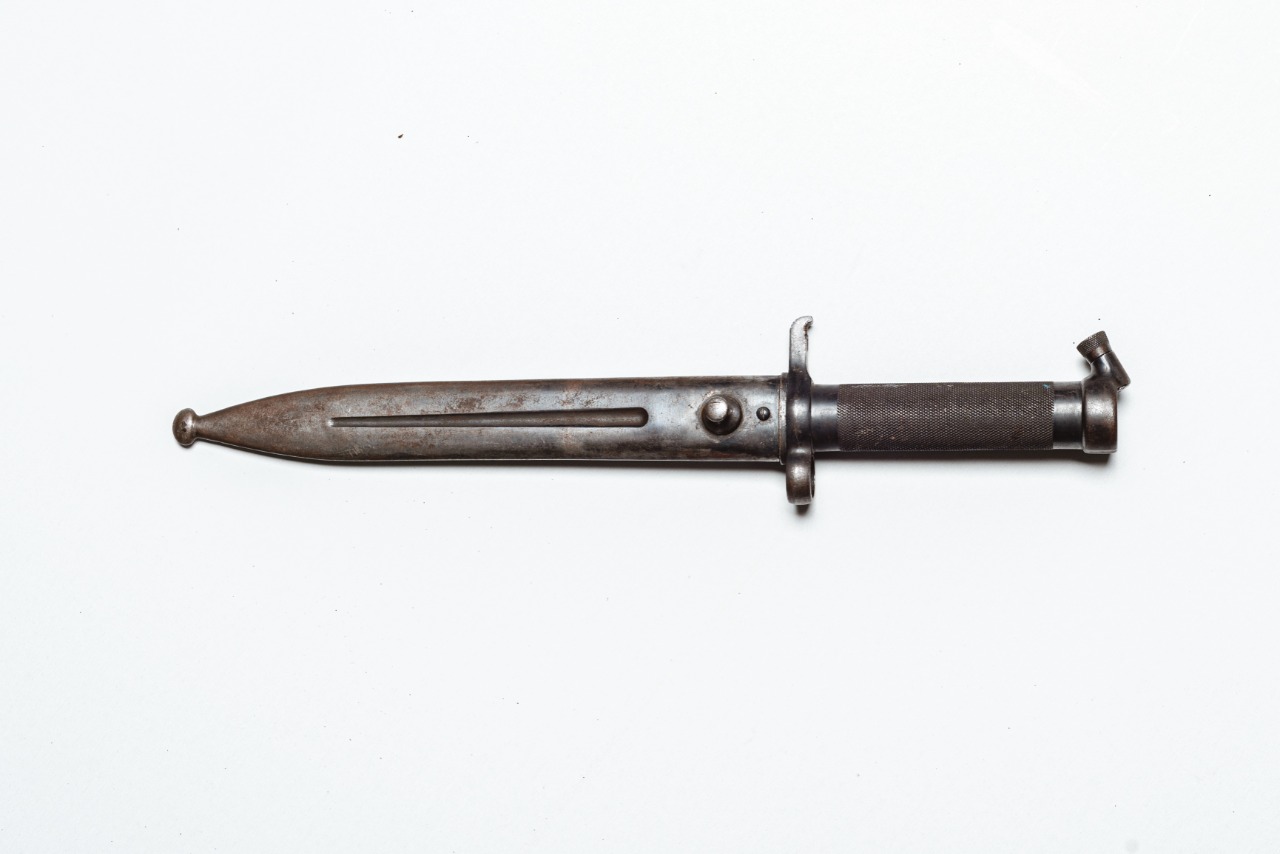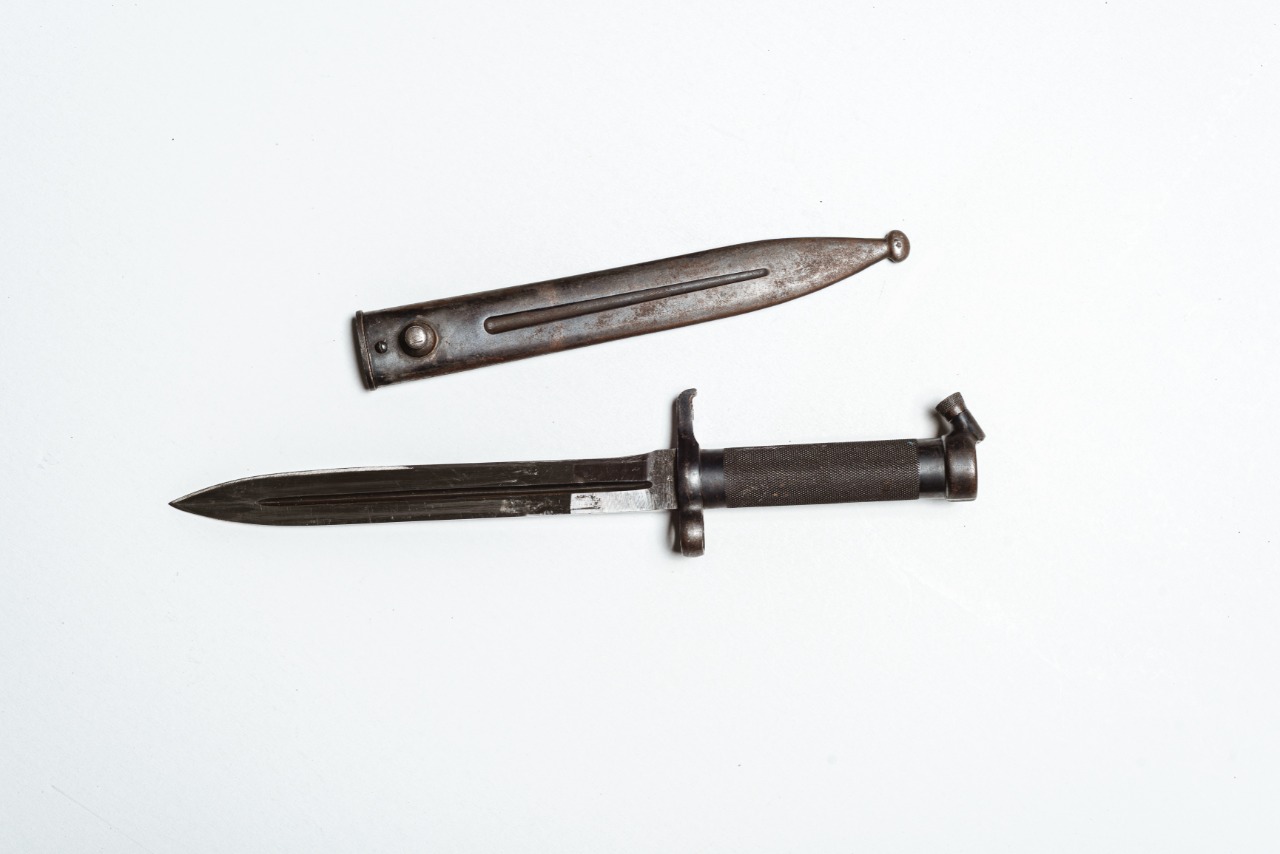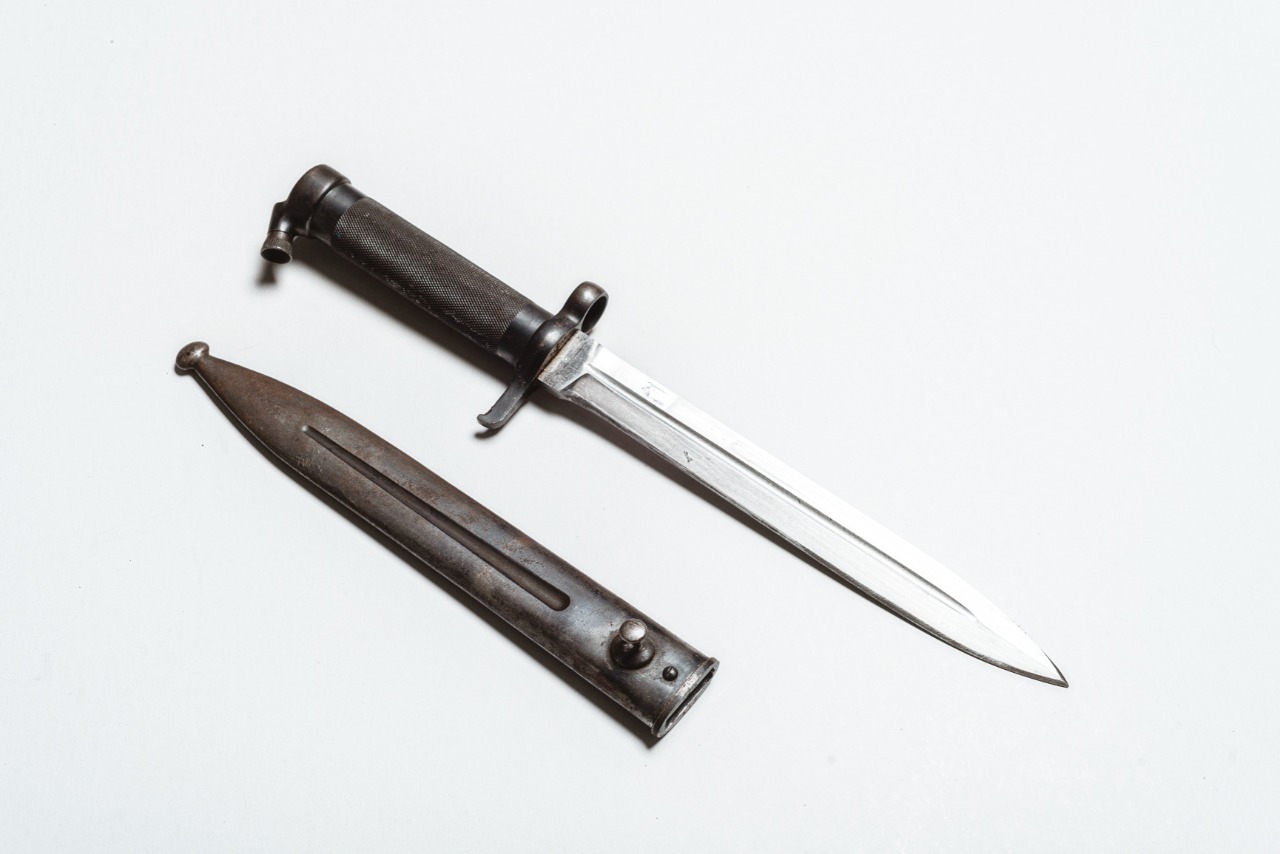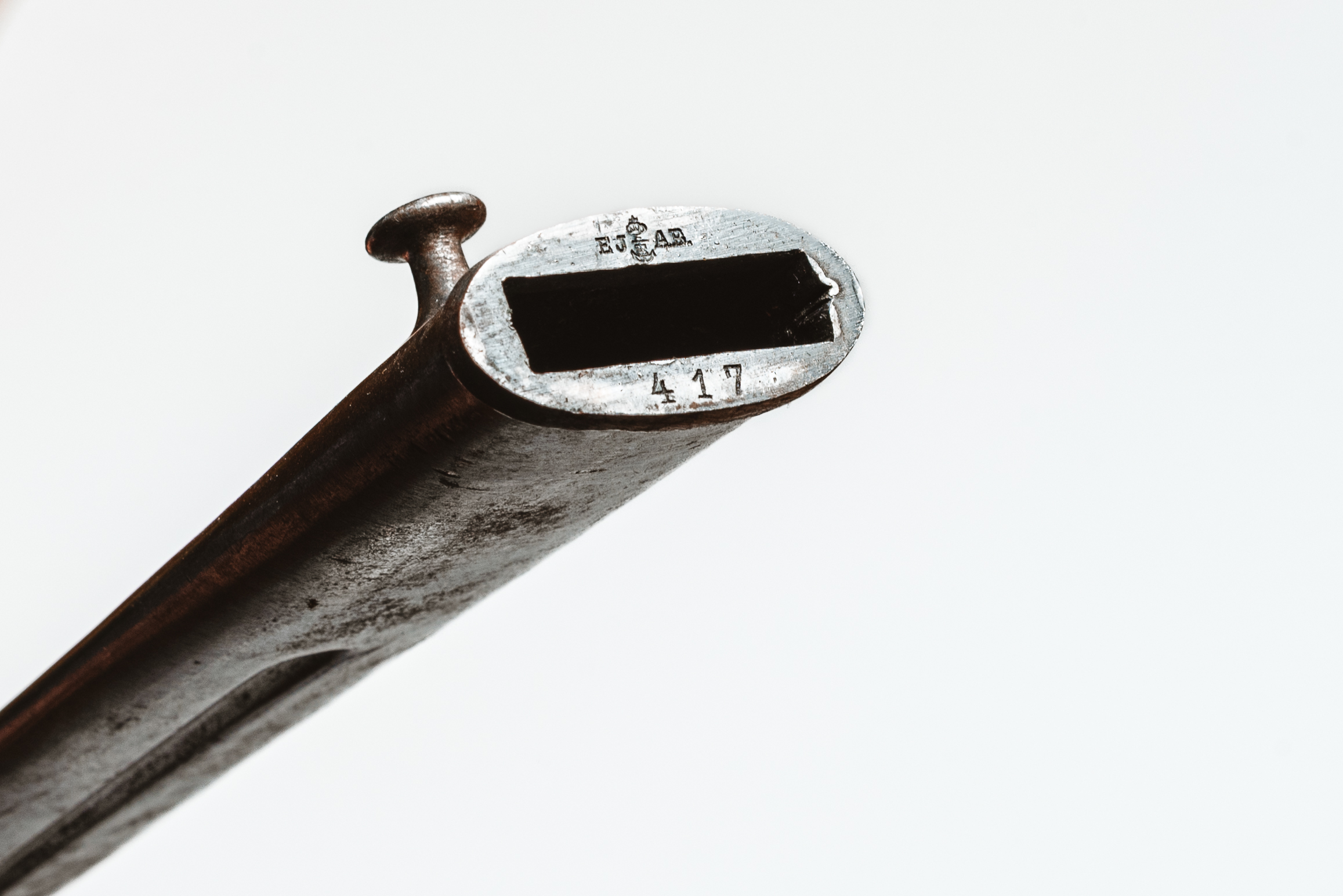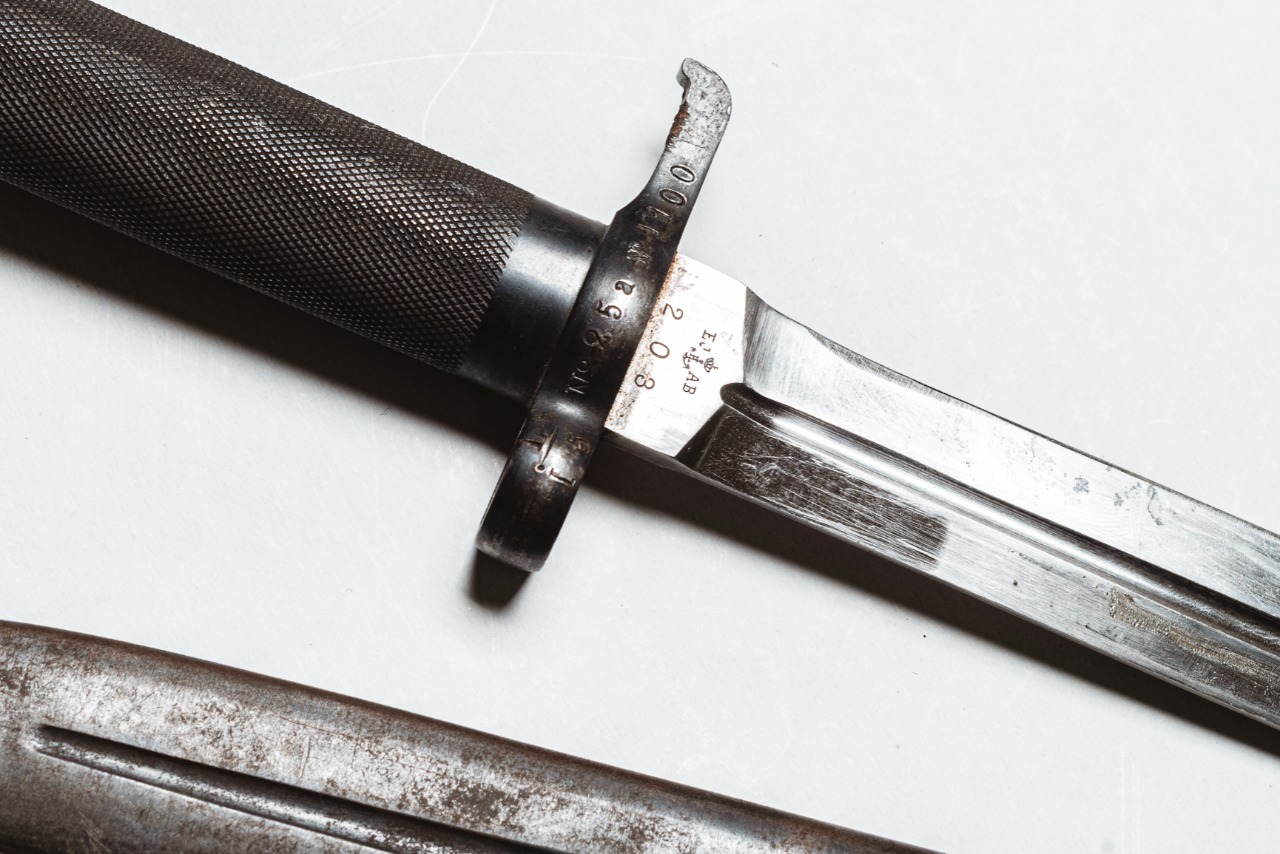The bayonet was used with Mauser rifles Model 1896 (Mauser M/1896) and 1938, as well as with the Ljungman AG-42 semi-automatic rifle (Model 1942).
Most examples were produced by the Swedish company Eskilstuna Jernmanufaktur AB (Eskilstuna) between 1899 and 1912, amounting to approximately 280,000 units. Later production continued at Carl Gustafs Stads Gevärsfaktori and Erik Anton Berg (also Eskilstuna), with the combined output of all three factories reaching about 665,000 pieces. These bayonets remained in service in the Swedish Army until 1962.
The Carl Gustaf M/96 bayonet features a straight, flat, single-edged steel blade with a narrow fuller tapering to the point. The hilt is hollow, cylindrical, oval in cross-section, and ribbed; at the top is a spring catch for attachment. The guard is flat, rounded toward the tip on one side and fitted with a barrel ring on the other. The scabbard is metal, with an inserted spring throat, a round stud at the mouth, and a ball-shaped finial; along its central line is a longitudinal fuller.
On the blade’s ricasso and guard appears the EJAB (Eskilstuna Jernmanufaktur Aktiebolaget) mark — an anchor under a crown with the number “203,” alongside the royal crown denoting Swedish military acceptance. The guard is stamped “L/I 5 № 25а, № 1100,” identifying the branch of service (infantry), unit number, and serial number. The scabbard’s throat and ball finial also bear the EJAB mark and the number “417.”
Notably, this specimen consists of parts manufactured in different periods and workshops: the hilt dates to 1905–1913 (with its characteristic conical socket), the blade has three-digit numbering, while the scabbard — judging by the finial’s shape — derives from an older model. The execution of the maker’s mark differs slightly from originals, suggesting later modifications or re-stamping of the blade.
